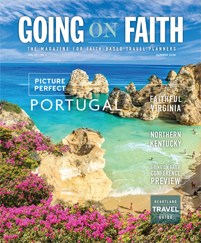Planning a mission trip takes extra thought and consideration because the journey focuses on serving others and sharing the gospel. Groups want to make an impact in a short period. That calls for extensive preparation and planning.
We asked three experienced mission leaders and trainers to share their thoughts about maximizing your group’s experience. They gave us plenty of good ideas about picking your destination, recruiting your team, raising money and leading on the road.
Picking a Destination That Fits
Group leaders should consider cost, contacts and the maturity of the team when deciding on a destination, according to David Bosworth, executive director of Short Term Mission Toolbox (www.stmtoolbox.org). Bosworth has more than 20 years of experience in short-term mission preparation. Toolbox is a one-stop, free resource that Bosworth developed for mission trip planners based on his experiences and those of other missionaries in the field. Bosworth also teaches missions at Colorado Christian University.
“I tell people to look at who you’re already connected with and how you can effectively support those missionaries,” said Bosworth, “If you’re affiliated with a denomination, work through those contacts.”
Cathie Homan is a director of the Youth with a Mission (YWAM) Strategic Frontier base in Colorado Springs, along with her husband, Scott. The Homans have ministered in 30 nations. Currently, they coordinate a staff of 160 people, oversee six mission training schools and send teams to 45 countries. She said that the cost of the trip and the length of time it will take are key factors to consider when first planning a mission trip.
“Maybe it’s a junior high group, and they only have $1,000 per child for expenses,” she said. “They might go someplace closer, like Mexico. Another group has more resources and wants to work with victims of human trafficking, so we send them to Nepal, Cambodia or India.”
Raymond Smith, associate professor of theology and ministry at Oral Roberts University (ORU), served as a missionary in Italy and the Philippines for 10 years hosting mission teams and training leaders. He teaches missions at ORU and has led numerous trips since 1999. He emphasized looking at the need of a particular destination.
“Almost every place has great need, but most Americans don’t speak many languages, so there must be translation work and intermediaries in place,” he said. “Ask, ‘What can our group accomplish and who needs what we have to offer?’ With that mentality, make some contacts.”
For people who have never traveled outside of the country, Smith usually suggests beginning with a domestic cross-cultural mission trip first. He recommends the Dream Center (www.dreamcenter.org), a volunteer-driven organization.
Recruiting Team Members
Mission trips can be physically and culturally challenging, and our experts recommend considering physical condition, health concerns and age when recruiting your team.
“The truth is, not everyone is ready to go right now,” said Smith. “Leaders need to be aware of the physical and environmental challenges at that location. For instance, someone with asthma might want to avoid Mexico City.”
Bosworth emphasized the screening process and the need for an application. The maturity level of travelers should be appropriate for each trip. For example, if team members are staying in host homes, a higher level of maturity is required.
“The screening process is critical because it’s very easy for people to jump on board,” said Bosworth. “All mission trips aren’t created equal. Don’t compromise the ministry by taking someone who isn’t ready for that particular trip.”
Smith mentioned that developing countries can look lovely from the beach, but 500 yards inland, the poverty can be staggering. He personally likes intergenerational teams because the shared experience bonds people of different ages together. Bosworth likes varied ages, too, although most teams he sends tend to be of a similar age. He remarked that older adults will be less able to keep up with younger team members and less tolerant of drama. If the ages of team members vary, recruit adults who enjoy working with the younger generation.
“A mission trip is not the place to get team members saved,” said Smith. “Put a team together that is not going to kill each other when they get there.”
Homan reiterated another valid point echoed by Smith and Bosworth.
“The sights and smells and spirits present in the land need to be addressed beforehand,” said Homan. “Many times, the teams come under that country’s spirit of bondage. They need to know how to combat that. People also need to be mature enough to value and honor that particular culture in their actions and dress.”
She adds that people should pack light. Everyone carries their own luggage. Participants might have to walk a mile through potholed streets or climb several flights of stairs where there’s no elevator, especially in Third World countries.









